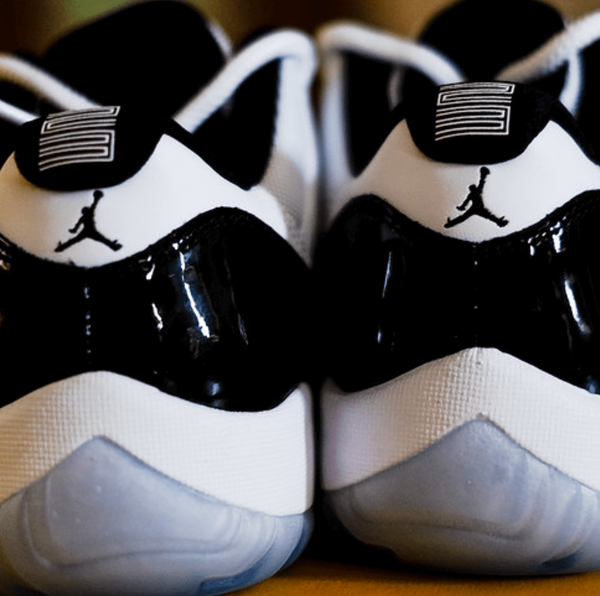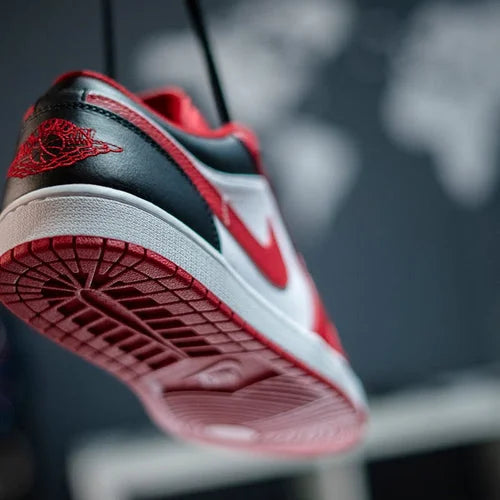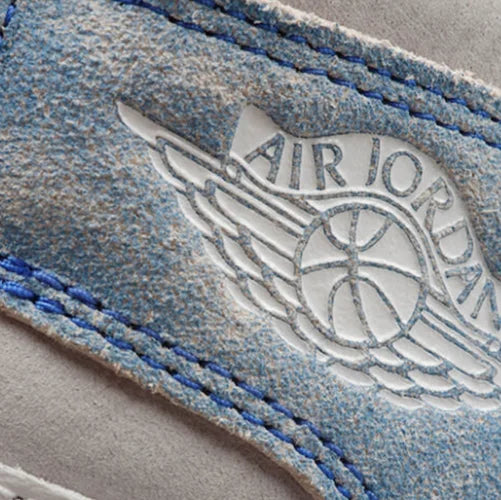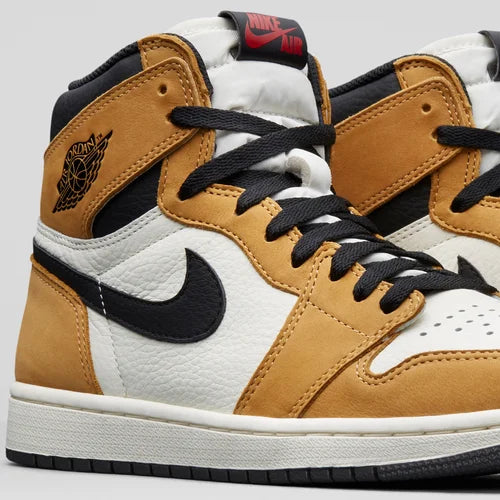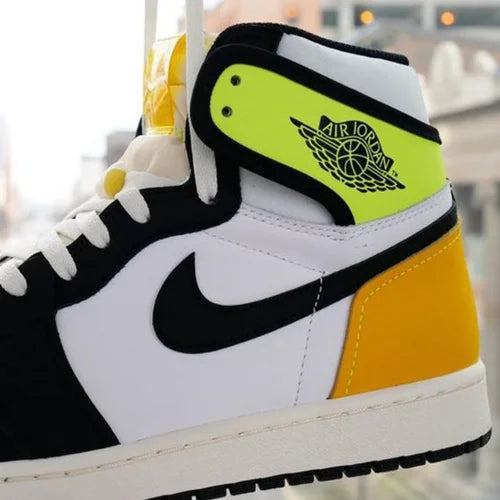How To Spot Real Vs. Fake Air Jordan 13

When buying Air Jordan 13 sneakers, it's crucial to know how to spot the real ones. This ensures you get quality shoes and protects your collection from fakes.
In this guide, we'll walk you through different ways to tell genuine Air Jordan 13s from counterfeits.
From basic checks to detailed inspections, you'll learn what to look for whether you're shopping online or in stores. By understanding these authenticity markers, you can shop confidently and avoid getting tricked by fake sellers.
Table of Contents
[ open ]Preliminary Checks for Authenticity
Before diving into the intricate details of Air Jordan 13 authentication, there are some preliminary checks to consider.
Firstly, the proof of purchase can be a crucial indicator of authenticity, especially when buying from resellers or second-hand markets.
Additionally, paying attention to the smell of the shoes can provide valuable insights, as authentic sneakers typically have a distinct odor due to the materials used in their production.
The Overall Look

When checking if Air Jordan 13 sneakers are real, there are some important things to look at. First, check the shape and colors to see if they're consistent. Authentic pairs usually have the same shape and colors all over.
Also, pay attention to the materials used, especially in areas like the heel and toe box. Fake ones might use cheaper materials or have a different shape. Make sure the fabric feels right, and the stitching looks good. These details can help you spot fake Air Jordan 13s.
Size Tag Examination

When checking if Air Jordan 13 sneakers are real, the size tag is important. Look at a few things:
First, see the style code on the tag. Real Jordans usually have a thinner style code compared to fakes. Look at the print in the top-right corner. Real ones usually have thinner prints.
Next, look at the manufacturing date. Real shoes often have a thicker font for the date, while fakes have thinner text.
Also, check where they're made. On real Air Jordan 13s, the "MADE IN CHINA" text is thinner and clearer. But on fakes, it might be thicker.
Lastly, compare the whole tag to the real ones you know. Look for any differences in how thick the letters are or if they're spaced weirdly. These small details can tell you if the shoes are real or fake.
Toebox Analysis
When checking if Air Jordan 13 sneakers are real, focus on the toe box. Here's what to look for:
Firstly, check the thickness of the toe box. Fake shoes often have a thicker toe box than real ones. Also, real Air Jordan 13s have a smoother curve from the sole, while fakes might have a more exaggerated curve.
Next, compare the toe box's overall look to the shoe's rest. Real ones usually look slimmer and sleeker, while fake ones may look bulkier.
Lastly, feel the material of the toe box. Real Air Jordan 13s use high-quality materials that feel durable and consistent. If the material feels cheap or different, the shoes might be fake. Keep these tips in mind to spot real Air Jordan 13s.
The Tongue of the Sneakers

Focus on the tongue when checking if Air Jordan 13 sneakers are real. Here's what to do:
First, look at the Jumpman logo on the tongue. Fake shoes usually have a thicker logo than real ones.
Also, check the stitching weight of the logo. Real Air Jordan 13s have consistent stitching throughout the logo. Fakes may have uneven stitching.
By looking at these details, you can tell if Air Jordan 13 sneakers are authentic.
Hologram Inspection

When checking the hologram on Air Jordan 13 sneakers, keep these points in mind:
Opacity: Real holograms are clear and solid. Fake ones might look fainter or less clear, especially the Jumpman logo and "23" text.
Stitching: Look closely at the stitching around the hologram. Legit pairs have neat and evenly spaced stitching, while fake ones may have thin or uneven stitching.
Placement: Notice where the stitching circle is around the hologram. Authentic shoes usually have it closer to the hologram bubble, while fakes may have it farther away.
Attention to these details allows you to spot fake holograms more easily on Air Jordan 13 sneakers.
Sole Examination

When checking the sole of Air Jordan 13 sneakers for authenticity, focus on a few key details. Firstly, look at the Jumpman logo's clarity. Real Air Jordan 13 soles usually have a clear Jumpman logo with defined lines, while fakes might have a thicker or less precise logo. Pay attention to the thickness of the Jumpman's arms to spot any differences between real and fake pairs.
Next, examine the carbon fiber pattern on the sole. Authentic Air Jordan 13s usually have a consistent and well-detailed pattern. Fake pairs might show inconsistencies or blurry lines in the carbon fiber design.
Lastly, consider the overall appearance of the sole. Genuine Air Jordan 13s tend to look sleek and well-crafted, with no obvious flaws. Fake ones may appear less refined or have irregularities in the design.
By looking closely at these details alongside other authenticity markers, like the tongue and size tag, you can better determine if the Air Jordan 13s are genuine.
Logo Authenticity Checks
Consider a few key points when checking the "JORDAN" text and Throat Jumpman Logo on Air Jordan 13 sneakers.
First, look at the size and thickness of the "JORDAN" text. Real Air Jordan 13s usually have larger and thicker text compared to fakes. If the text looks too small or thin, it might be a fake.
Next, check where the text is positioned on the shoe. Authentic pairs typically have the "JORDAN" text closer to the edges, while fakes might place it too far away. This detail might be subtle but can help spot fakes.
Also, examine the clarity of the "JORDAN" text. Genuine pairs usually have clear, well-defined text with sharp edges. If the text looks blurry or poorly done, it could be a fake.
Lastly, look at the Throat Jumpman Logo. Real logos are usually larger and more detailed, with smoother lines, while fake logos may appear smaller and less refined.
Insole and Stitching Details
When looking closely at the stitching below the "JORDAN" text tab on Air Jordan 13 sneakers, there are key things to consider.
Firstly, notice the shape of the stitching. Real shoes usually have stitching that's evenly shaped and aligned below the "JORDAN" text tab. But counterfeit shoes might have irregular or not well-made stitching, hinting at lower quality.
Also, check the thickness and length of the stitches. Genuine Air Jordan 13s have stitches that are consistent in thickness and length throughout the shoe. However, fake shoes might have thicker and shorter stitches, not matching the standard pattern found on real pairs.
Lastly, look at the overall quality of the stitching. Real shoes usually have neat stitching with few loose threads or inconsistencies. However, fake shoes might have sloppy stitching or unevenness, indicating lower quality.
Heel Bump and Laces
Inspecting the heel bump and laces of Air Jordan 13s can reveal important clues about their authenticity. Pay attention to the shape of the heel bump and how the laces fit, comparing them to known authentic pairs for accuracy.
Label Verification
Don't forget to look at the box label when checking if Air Jordan 13 sneakers are real. Look for clear, bold text for details like "AIR JORDAN 13 RETRO" and the style code. Real labels have larger, easy-to-read style codes.
Also, notice how the text is arranged. Authentic labels are neat and evenly spaced. The text could be fake if it looks faint, small, or poorly printed. Pay attention to these details to ensure you're getting genuine Air Jordan 13s.
Quick Tips for Spotting Fakes
In summary, here are some key points to remember when verifying the authenticity of Air Jordan 13 sneakers:
Check the proof of purchase and the smell of the shoes.
Examine the overall look, including shape, coloring, and textures.
Pay attention to details such as the size tag, toe box, tongue, hologram, sole, logos, insole, stitching, heel bump, laces, and labels.
Conclusion
To sum up, authenticating Air Jordan 13 sneakers involves examining different aspects of their design and build.
By following the steps in this guide and inspecting them carefully, you can confidently spot real Air Jordan 13s from fake ones.
Choosing authentic pairs ensures top-notch quality and maintains the value of your sneaker collection. Also, if you want to legit check shoes, you can always trust our authenticators.
